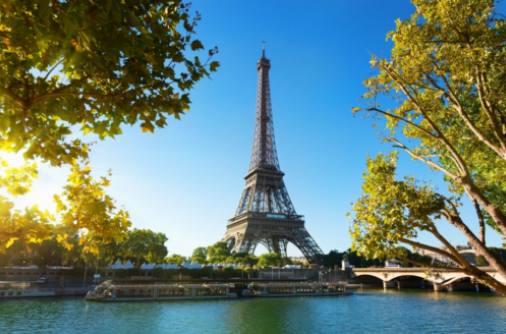The fountains of Versailles are not only exquisite examples of engineering prowess and artistic design, but also hold deep symbolism and meaning. From their intricate maintenance and restoration to their grand display of water features, these masterpieces continue to captivate visitors from around the world.

Engineering Marvels of the Versailles Fountains
The engineering behind the fountains of Versailles is nothing short of remarkable. These masterpieces of hydraulic engineering were designed and constructed during the 17th century, under the supervision of talented engineers and craftsmen. The fountains are powered by a complex system of water pumps, reservoirs, and aqueducts, allowing water to flow and cascade in intricate patterns and designs.
One of the most impressive features of the Versailles fountains is their sheer size and scale. The engineering marvels include the Grand Canal, which stretches for over a mile and is lined with dozens of beautifully designed fountains and water features. These fountains were not only aesthetically pleasing but also served practical purposes, such as providing water for the gardens and palace.
The hydraulic engineering of the fountains also allowed for a variety of water effects, including jets, cascades, and waterfalls. This required precise calculations and skilled craftsmanship to ensure that the water flowed smoothly and in the desired patterns. Additionally, the fountains were designed to operate without the use of modern technology, relying instead on gravity and water pressure to create their effects.
Overall, the engineering behind the Versailles fountains is a testament to the skill and ingenuity of the craftsmen and engineers of the time. Their ability to harness the power of water and create stunning visual displays is truly a marvel to behold.
Artistic Design Elements in the Versailles Fountains
From the stunning sculptures that adorn the fountains to the careful attention to detail in the layout and arrangement of the water features, every aspect of the artistic design of the Versailles fountains is a testament to the skill and creativity of their creators.
One of the most striking artistic design elements of the Versailles fountains is the use of sculptures to enhance the beauty and grandeur of the water features. These sculptures, which range from mythological figures to animals and even everyday objects, are expertly crafted and strategically placed to create a sense of harmony and balance within the fountains. Each sculpture is meticulously designed to complement the overall aesthetic of the fountain and enhance the overall visual impact of the water feature.
In addition to the sculptures, the layout and arrangement of the water features themselves are also marvels of artistic design. From the symmetrical and geometric patterns of the water jets to the rhythmic flow of the cascading water, every aspect of the layout of the fountains is carefully planned and executed to create a sense of visual harmony and beauty. The use of different types of water features, such as cascades, jets, and pools, adds depth and dimension to the overall design of the fountains, creating a dynamic and captivating display for visitors to enjoy.
Overall, the artistic design elements of the Versailles fountains are a testament to the skill and creativity of their creators. From the stunning sculptures to the carefully planned layout of the water features, every aspect of the design of the fountains is a masterpiece of artistic expression and engineering prowess.
Maintenance and Restoration of the Versailles Fountains
The maintenance and restoration of the Versailles fountains are crucial to ensure that these intricate works of art and engineering continue to impress visitors for generations to come. The fountains require regular upkeep and restoration due to their age and the wear and tear caused by exposure to the elements. Skilled craftsmen and technicians work tirelessly to preserve the fountains' beauty and functionality, taking care to use traditional techniques and materials to maintain their historical integrity. Special attention is paid to the intricate mechanisms that power the fountains, including pumps, pipes, and water features, to ensure that they continue to operate smoothly. In addition to routine maintenance, periodic restoration projects are undertaken to address any damage or deterioration that may have occurred over time. Through meticulous care and expert craftsmanship, the Versailles fountains are kept in pristine condition, allowing visitors to marvel at these awe-inspiring masterpieces for years to come.
Symbolism and Meaning Behind the Versailles Fountains
Each fountain was carefully designed to convey a specific message or evoke a particular emotion, adding layers of meaning to the already impressive engineering and artistic elements.
In the Palace of Versailles, water symbolizes power, wealth, and luxury. The intricate fountains and water features were not only impressive displays of engineering prowess, but also served as symbols of the king's dominion over nature and his ability to control and manipulate water. The presence of water in the gardens was meant to impress and awe visitors, showcasing the opulence and grandeur of the French monarchy.
Many of the fountains in Versailles were also designed with specific themes or allegories in mind. For example, the Fountain of Apollo, with its depiction of the sun god riding his chariot across the sky, symbolizes the power of the monarch and the idea of divine right to rule. The Fountain of Neptune, on the other hand, represents the king's control over the seas and his ability to navigate turbulent waters with ease.
The intricate sculptures and ornate designs of the fountains also carried symbolic meaning. Mythological figures and allegorical scenes were commonly featured, each conveying a specific message or moral lesson. The use of classical motifs and symbols, such as dolphins, tritons, and naiads, added an air of sophistication and elegance to the fountains while also imbuing them with deeper layers of meaning.
Overall, the fountains of Versailles served not only as impressive feats of engineering and artistry, but also as powerful symbols of the monarchy's wealth, power, and divine authority. They were carefully designed to convey specific messages and evoke particular emotions, adding a rich layer of symbolism to the already breathtaking displays of water and light.
